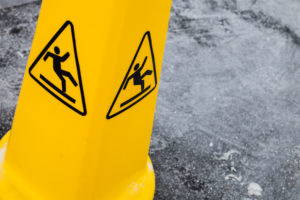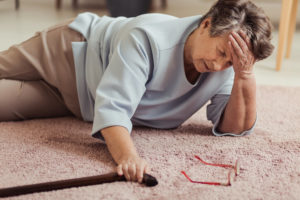
By Kora Behrens, Clinical Nurse Manager, Medical Solutions
Did you know that every 11 seconds an older adult is treated in the emergency room for a fall? Or how about the fact that every 19 minutes an older adult dies from a fall?
Falls are the leading causes of fatal and non-fatal injuries for older Americans. The financial toll related to the falls of older adults is expected to increase as the population ages and it may reach $67.7 billion by the year 2020. This an astounding statistic and it’s no wonder that every healthcare facility around the country places a large emphasis on reducing falls in every way possible. Even though there are several successful fall prevention techniques that have been adopted throughout time, it is always important to stay abreast of changes and adopt new strategies as appropriate, so that falls can be prevented as much as possible!
A few current and widely used fall prevention interventions include locking the bed and keeping it in the lowest position, putting bed rails up and keeping call light and other personal belongings within reach, non-slip footwear, clutter-free room, appropriate use of sensory aids, dry floor and adequate lighting, hourly rounding, and patient and family education. These are just to name a few. Despite implementing these strategies, falls still occur and there’s further work to be done to further decrease fall rates.
New Strategies
One newer strategy that’s been adopted is the use of “virtual sitter” technology. This technology can monitor a patient’s movements under ambient light and it can also be used to create and draw virtual zones, trip wires, and other trigger points within the field of view. These lines or zones are used to detect when a patient moves across those boundaries and then an alert is sent to the monitor tech to warn them of the potential danger to the patient. Additional features of this continuous live video feed include two-way audio, voice recognition, patient privacy modes, and customizable alerting. When an alert is sent to the monitor technician, they can intervene in several ways: using two-way audio to direct the patient to remain in bed or assess the patients’ needs, contact the patient’s RN or nurse’s aide, or contact the unit supervisor for emergent situations. This modern technology has been shown to not only reduce the number of falls, but also that it can decrease fall-related costs for the hospital.

Another innovative way of using technology involves monitoring people with sensors to increase the ability to predict when falls can occur. Using sensor measurements to determine walking speeds and stride length has helped to correlate a slow walking pace to the risk of falling. The shortening of a person’s stride also determines the likelihood that a fall could occur within three weeks. When the sensor system detects notable changes in a person’s gait, an alert is sent to the caregiver so he or she can take steps or enhance precautions to prevent falls in the foreseeable future.
One unconventional way of predicting falls is considering what goes on in people’s brains. By tracking the brain activity with walking, talking, and walking while talking it has been determined that the front part of the brain works harder while multi-tasking. This could potentially explain why cognitively impaired people tend to fall at a higher rater than those with normal cognition. The goal with using this approach is to be able to detect if a person is at higher risk of falls before any physical symptoms manifest.
These innovative strategies are extremely important because they push us to think beyond the conventional prevention techniques. To get a true grasp on minimizing falls, we must understand why they are occurring and how to prevent them. Part of prevention includes focusing on ways to predict if and when a person is likely to fall. If we can implement emerging technologies with the techniques that we currently have in place, we may be onto something. When it comes to falls, the most important thing we must do is to stay up to date with changes in our patients but also changes in best practices.